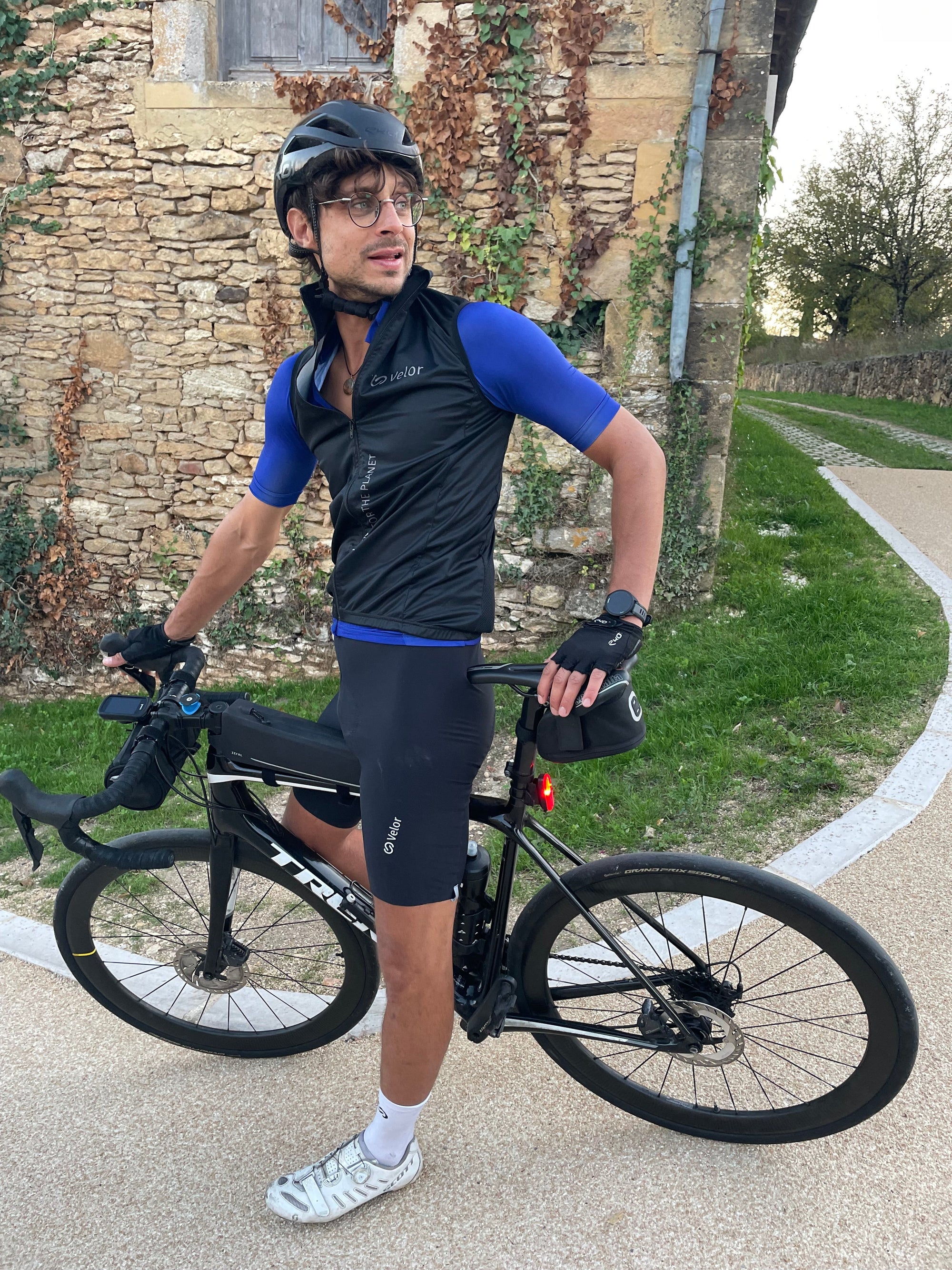
We rode in the Dordogne, here are some tips
By Florian Jardin
We rode in the Dordogne, here are some tips
At the beginning of September 2024, when the Indian summer had barely announced its arrival, we chose to leave the Mediterranean coast and its creeks to join the landscapes of the Dordogne.
Some things that deserve to be known for lovers of cycling, history and nature. That is what we are dealing with here.
The Dordogne is a bit like the timeless France, the one of castles and terroir.
In this article we also want to highlight the cycling potential of the region.
Here or elsewhere, the preparation of the bikes
In the Dordogne, the winding and hilly roads offer an ideal playground for cyclists, but before setting off, careful preparation of the bike is required. Whether you want to enjoy the dizzying descents along the valley or climb to the many castles, it is essential to check the wheels and axle of the bike. Properly inflated tires and a well-adjusted axle to ensure a smooth experience, even on the roughest trails. In the Dordogne, the beauty of the landscapes is fully discovered when you take care of your bike. We wanted to combine mechanical performance and visual pleasure.
Blandine and I proudly put on our 100% recycled Velor outfit and set off from a hill. Head for a famous castle...
Josephine Baker's home: the Château des Milandes
Blandine is credited with two Tour de France climbs (the Ventoux and the Izoard), I have my legs trained following my challenge "les cinglés du Ventoux" (three climbs of the Ventoux in a row).
On the way for a little more than 70 km
The route of the castles regularly follows the famous river that bears the name of the region. The Dordogne River is a river that originates in the Massif Central, France, and flows into the Gironde estuary, which it forms with the Garonne. For almost 500 km it crosses several departments and regions of south-west France.
Enough to give you energy when you pedal!
The Château des Milandes originally belonged to the Caumont family, a noble French family who had it built in the fifteenth century. The opportunity to stop to repair one of the bikes. Far from the smooth tracks of the Paris region, here it is better to drive with tires in 30 or 32: there are holes! The opportunity to admire the castle of Josephine Baker.
This famous singer and dancer bought the Château des Milandes in 1947. The estate is absolutely majestic. It became his refuge and the symbol of his dream: to unite peoples, whatever their origins and habits. There she welcomed her twelve adopted children, forming a "rainbow tribe" to prove that love transcends differences. Despite financial difficulties, Josephine fought to preserve this place that embodied her vision of peace and unity. Today, the Château des Milandes tells its story of courage and humanism.
We went in for a quick tour.
And here we go again, in the saddle!
The crossing of Saint Cyprien and Sarlat La Cadenas
Driving through Sarlat is a bit like immersing yourself in the medieval past, that of fortified castles and knights. The pleasure of passing through the alleys of the thousand-year-old city with our bikes.
Famous for its cobbled streets and golden stone buildings, the town is a jewel of Perigord architecture.
We cross the city with our mouths watering in front of the local culinary specialties on the terraces (foie-gras, truffles, etc.). Enough to console ourselves with these historic cobblestones that hit our wheels and knees. The moment is authentic.
Soon we head for another village, no less historic.
Saint-Cyprien, a small market town unknown to most, is nestled in the heart of the Dordogne valley, surrounded by cliffs and forests.
Saint-Cyprien remains above all a must-see place for its markets and festivals.
I particularly like this timeless place where passers-by are particularly curious at the sight of my swimsuit.
Christian, one of them, a cyclist in his forties, invites me and his friends for a coffee so that I can tell him more about the circular economy and the Velor adventure. The fact that we are the first brand to produce and distribute a 100% circular jersey intrigues them!
The Velor community continues to grow!
Before leaving, we can't help but take a break in front of the Benedictine abbey. Founded in the ninth century, it bears witness to its rich medieval past.
Together, these two localities embody the beauty and history of the Dordogne.
We still have about thirty kilometers to reach the last stage: an imposing fort leaning on the banks of the Dordogne.
Beynac and Cazenac: on the banks of the Dordogne
The last kilometers are "rolling" and offer us the almost permanent view of the Dordogne that we can almost hear flowing.
After about fifteen minutes in Blandine's wheel, we arrive at the last stage.
I can stand the Velor windbreaker well in the early evening.
We can't wait to sit in one of the bars on the edge of the shore to enjoy the view of the river and congratulate ourselves on this outing. But before that, we decided to climb the last kilometer in the cobbled streets to the castle. Hills at more than 20% in a chivalrous setting and tires skidding on the ground that still seems to belong to our ancestors.
Beynac and Cazenac, perched on the banks of the Dordogne River, is a must-see stop on a bike ride in the region.
This is our last tip for your bike rides if you are passing through the area.
Pedaling through these places steeped in history, we had this feeling of lightness that takes you on a journey through time.
An outing as we like them: culture, sport and circularity!

